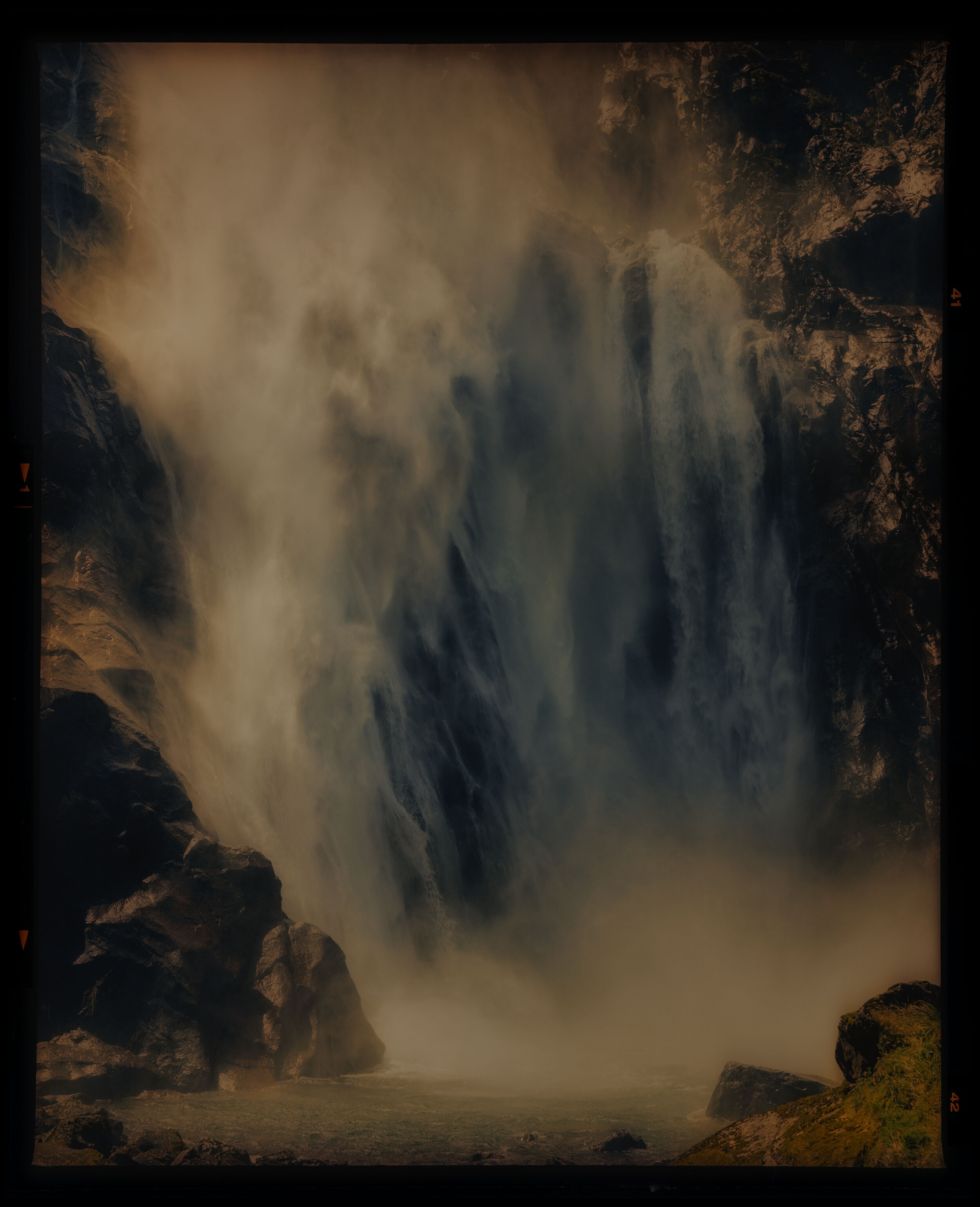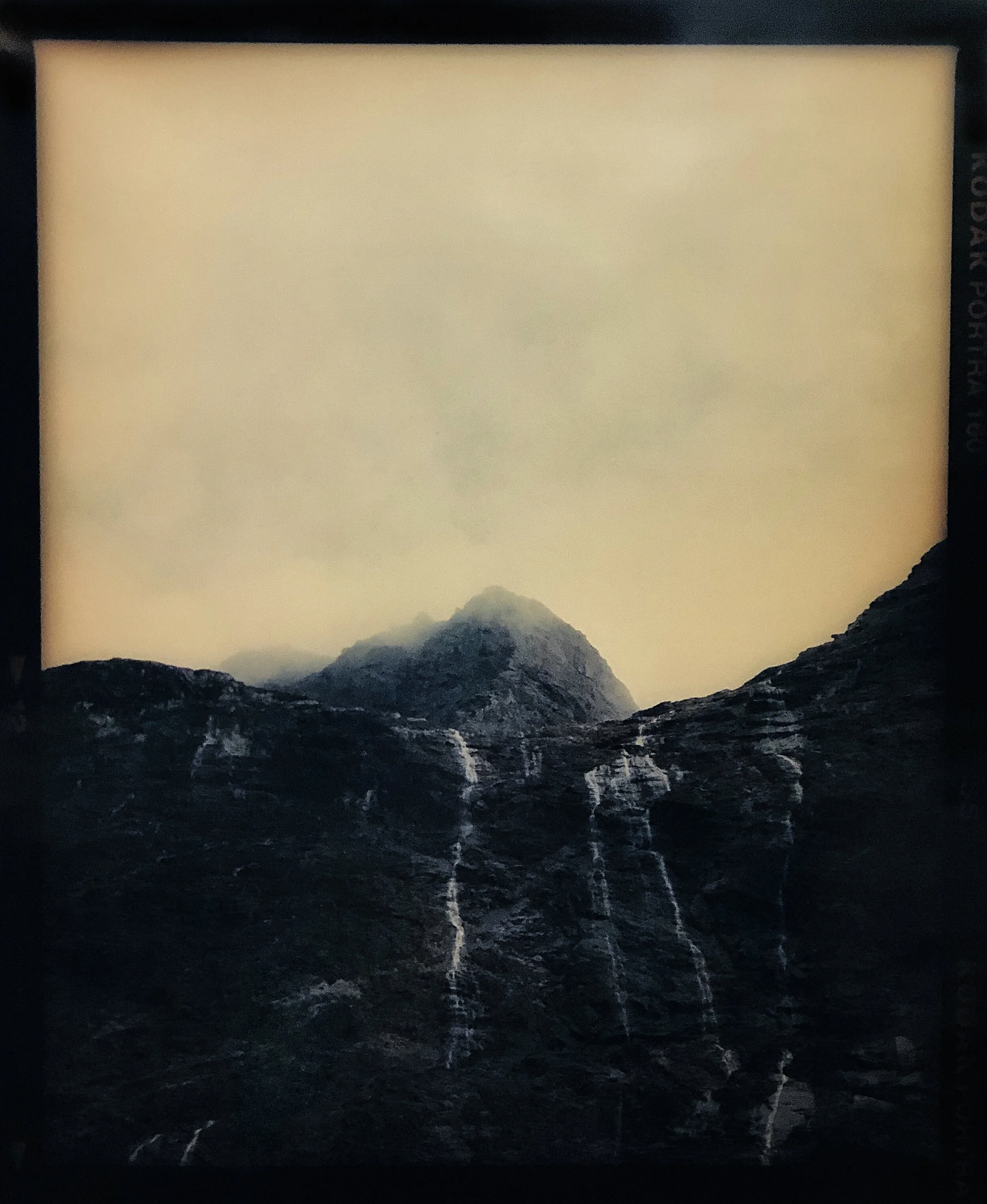Age of Reason - reviewed
Age of Reason
Derek Henderson
Melanie Roger Gallery, Auckland
21 August – 14 September 2019
Reviewed by Andrew Clark for PhotoForum, September 2019
In landscape photographs from the nineteenth century, the skies are often an unblemished, washed-out expanse of white. This odd phenomenon is due to the glass plate negatives used in this era being insufficiently sensitive to blue light to allow them to capture the distinction between clouds and sky, lending such images a curiously airless and alien atmosphere.
Something similar is taking place in Derek Henderson’s latest exhibition at Melanie Roger Gallery, Age of Reason. Henderson presents a series of large-format images of New Zealand landscapes in sepia tones, evoking the works of colonial-era photographers such as the Burton Brothers, Josiah Martin, Muir and Moodie and James Bragge.
Derek Henderson, Makara Bay, 2019
The works of these historical photographers are, of course, inextricably linked to the anglo-centric colonial ideology of early New Zealand, but this does not diminish their strange, evocative potentiality or their documentary value. There was something in these landscapes that the early photographers found valuable, something outside of their utility as wildernesses to be tamed or as romantic backdrops for human dramas. There is an indefinite, unresolved quality to the images, as though there were something at once transcendental and utterly physical at work in the landscape that both camera and photographer struggled to capture. The white void of the sky, the blurred branches of moving trees and water and the infinitesimal, fractal delicacy of stones and plants in these photographs seem to speak to a chasm of time that has nothing to do with history or narrative, a break between then and now that is both threatening and beguiling.
These are the features of early New Zealand photography that Henderson seems to have set out to capture in his new works. By entering a dialogue with these forebears, Henderson is also acknowledging photography's historical dynamics of ownership, whereby a power-imbalance between subject and photographer, viewed and viewer, has long been implicit in the process itself. This is a necessary discussion to have in this context, given the social and political history of the concept of land ownership in these islands. By linking his photographs of places to those of his earliest photographic ancestors, Henderson’s works could be trying to negotiate an escape from the idea of place as property, attempting to come as close as possible to touching the land’s pre-photographic state. In doing so, is Henderson trying to locate the source of the uneasy energy that suffuses the works of the nineteenth-century practitioners, the cause of the uncertainty—fear, even—that lurks in the peripheries of their images? His choice of title, in this context, begins to take on an ironic cast, recontextualising the idea of Enlightenment science and rationality as a mask hiding an unruly, ragged and irreducible reality.
Presented as imposing poster-sized chromogenic prints, attached directly to the wall without an intermediary barrier of glass or frame to soften their impact, the works in this exhibition are viscerally effective. In Gulliver Peak, Southland, New Zealand, Henderson presents the mountain’s top emerging from behind a rampart of black cliffs, a stark and alien scene that is almost abstracted in its division of the picture plane into horizontal bands of darkness and light. The mountain peak itself, fading at its edges into the surrounding clouds, functions as a kind of liminal, intermediary zone, collapsing the oppositional pairing of stone and sky. Elsewhere, in Lady Bowen Falls, Milford Sound, New Zealand, the titular waterfall takes on a ghostly cast, seeming to emerge from the pool and the surrounding rocks with an eerie agency rather than pouring blindly from above. In this respect, its closest historical parallels might be James Valentine’s images of Rotorua geyser plumes, which seem to hang in the air like the ectoplasmic beings of Victorian spirit photography.
Derek Henderson, Installation view, Melanie Roger gallery
Landscape is a powerful subject matter in the current historical moment—a reflection of the dawning global recognition that there is no “outside” to which things can be discarded or disregarded, only a global ecosystem of which humans are a part. Henderson’s decision to engage with early photographic depictions of the landscape of Aotearoa has proved worthwhile, resulting in a set of prints that are cryptic, evocative and mesmerising.
Andrew Clark is a writer and editor based in Auckland. He has a background in fine arts and a PhD in English. His areas of interest include art, photography, literature, film and science fiction.
Gallery captions for mobile devices
Derek Henderson, Lady Bowen Falls, Milford Sound
Derek Henderson, Gulliver Peak, Southland




